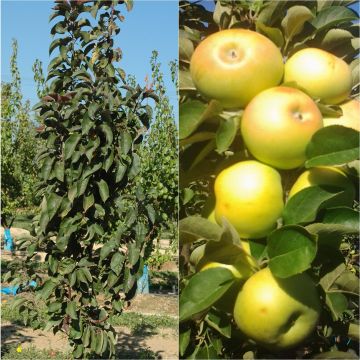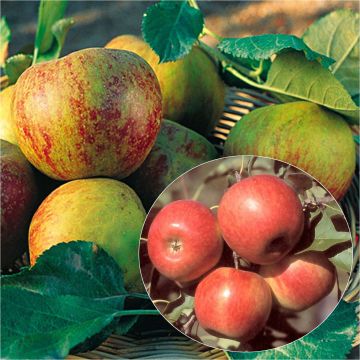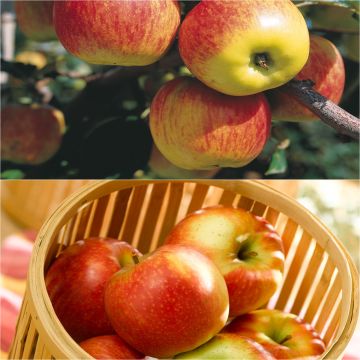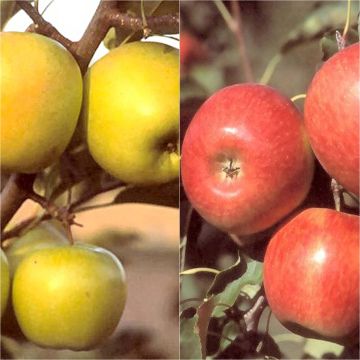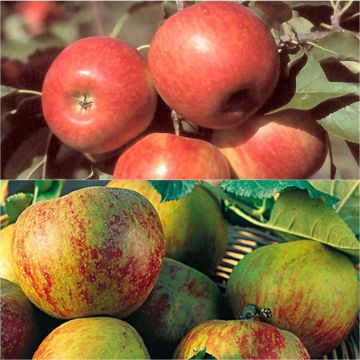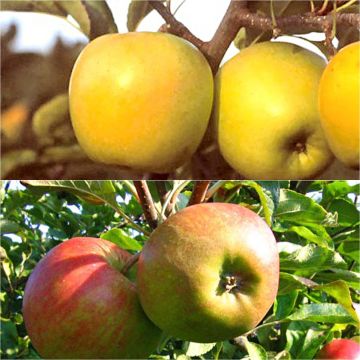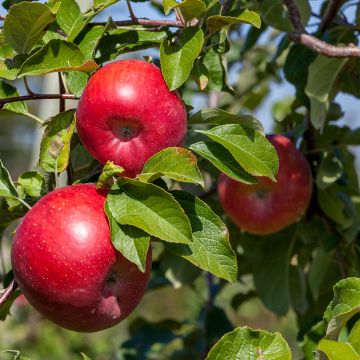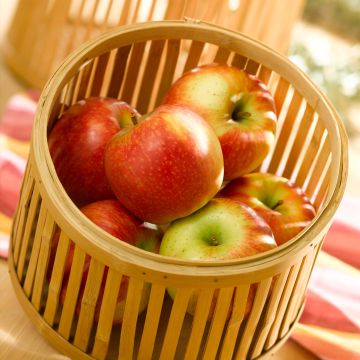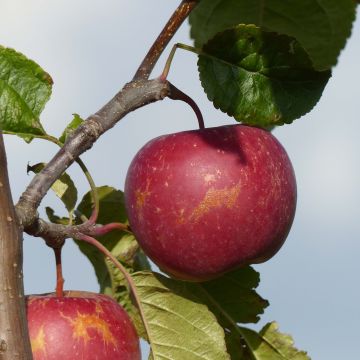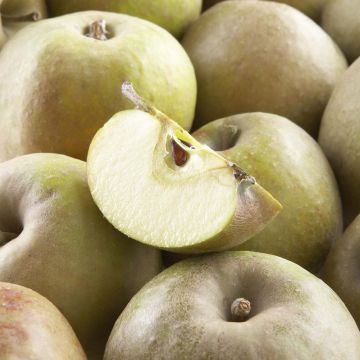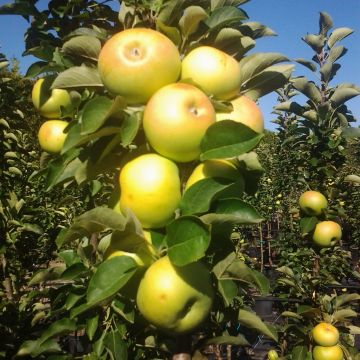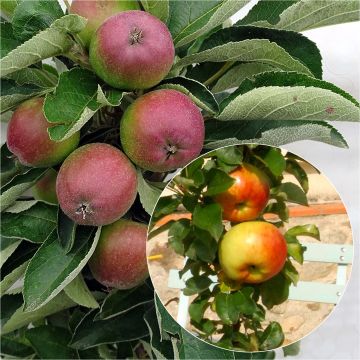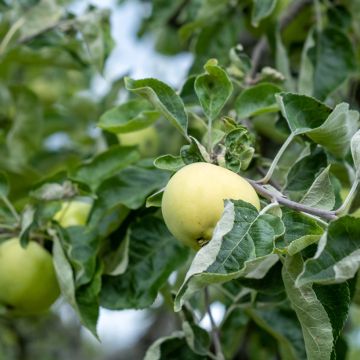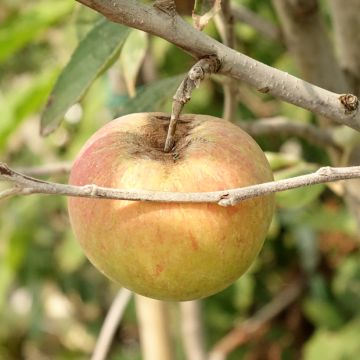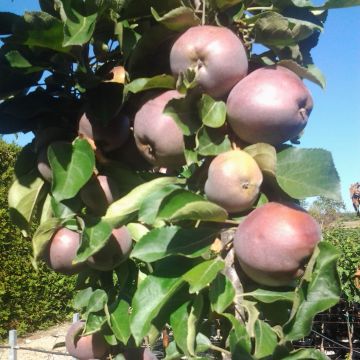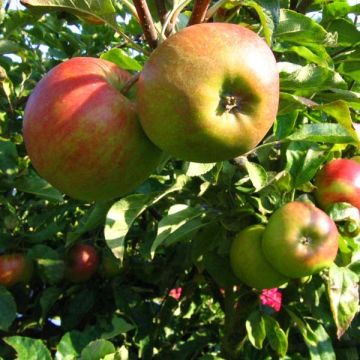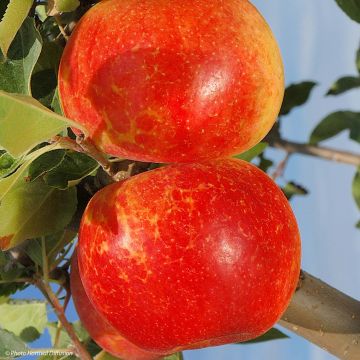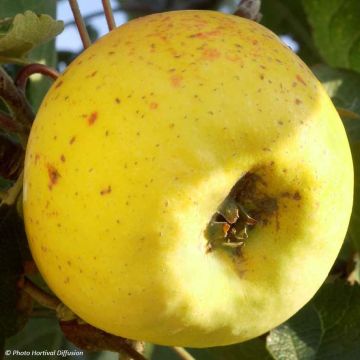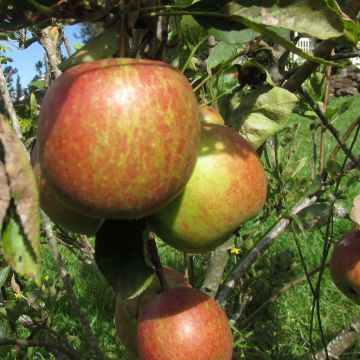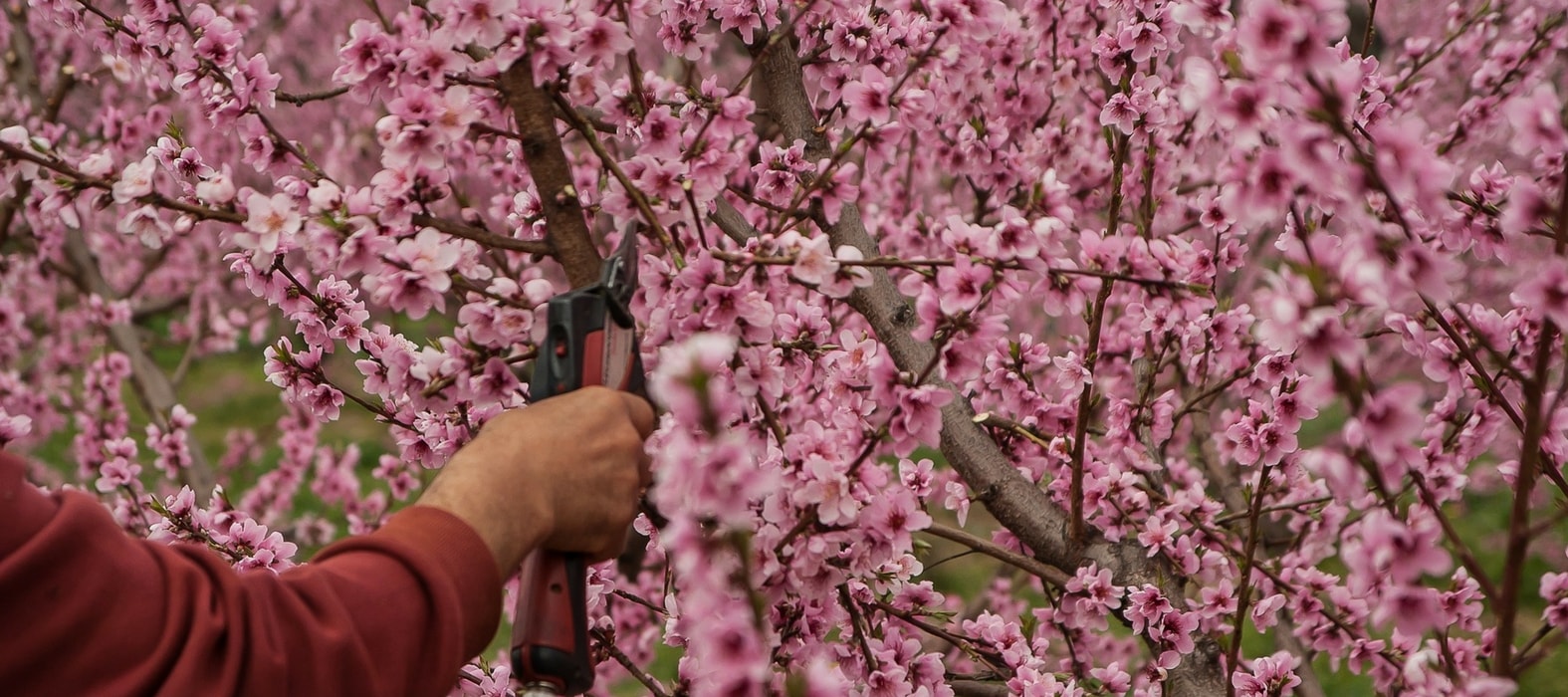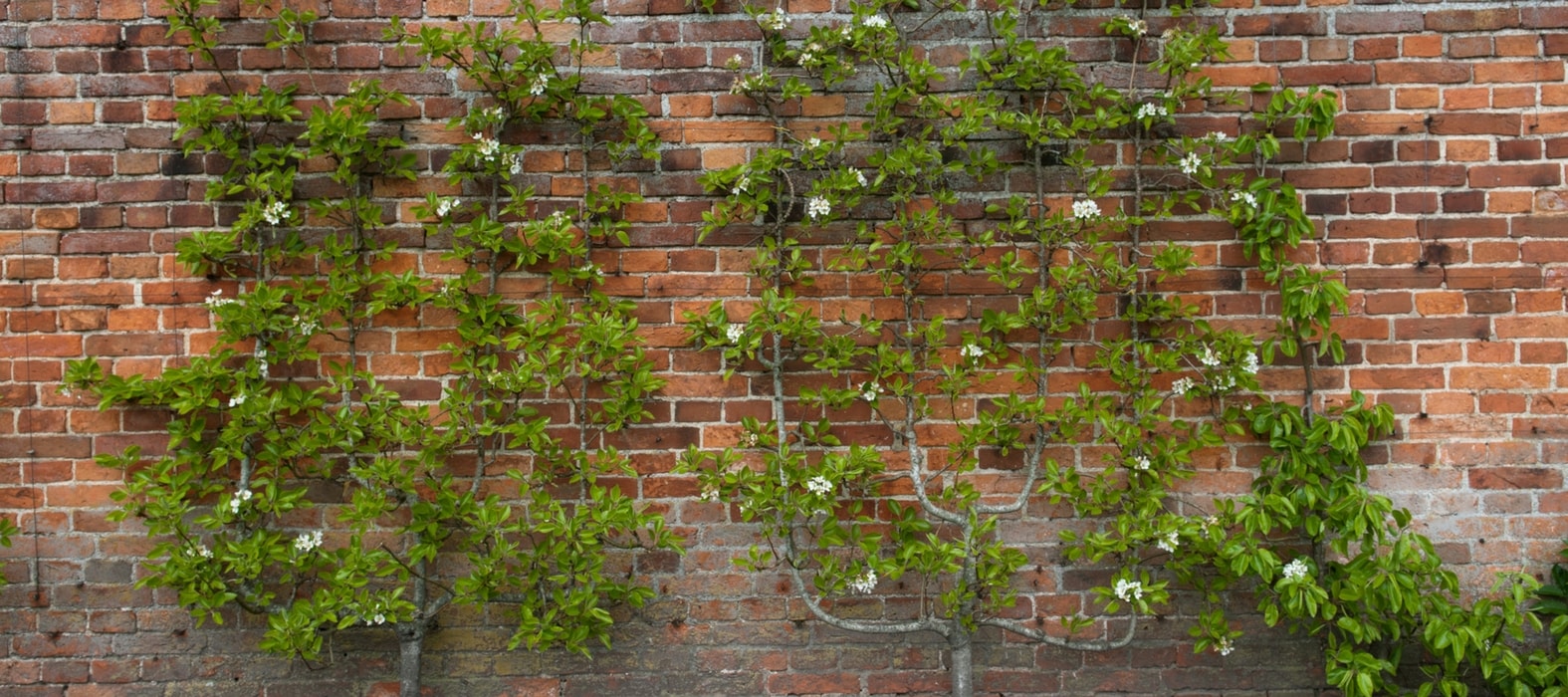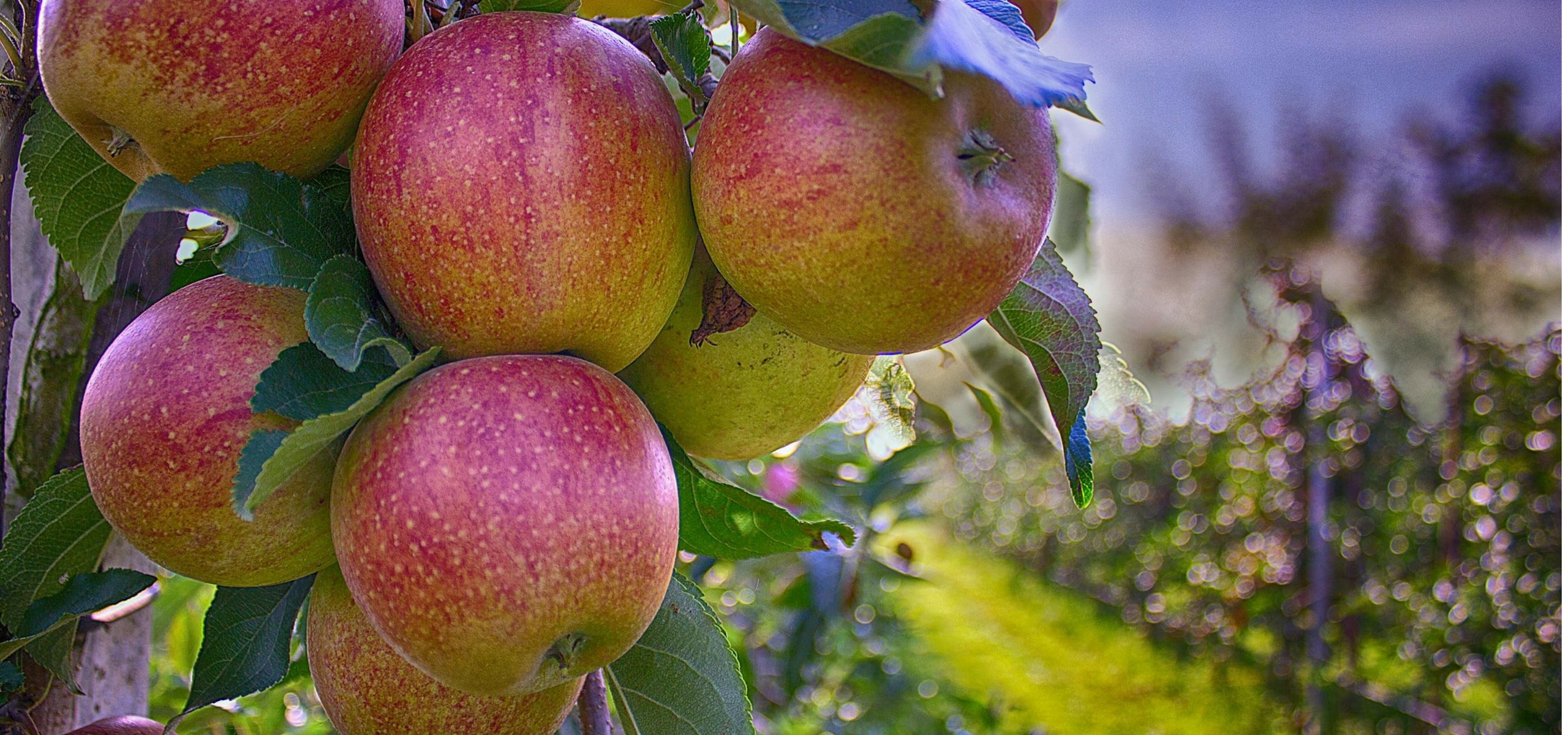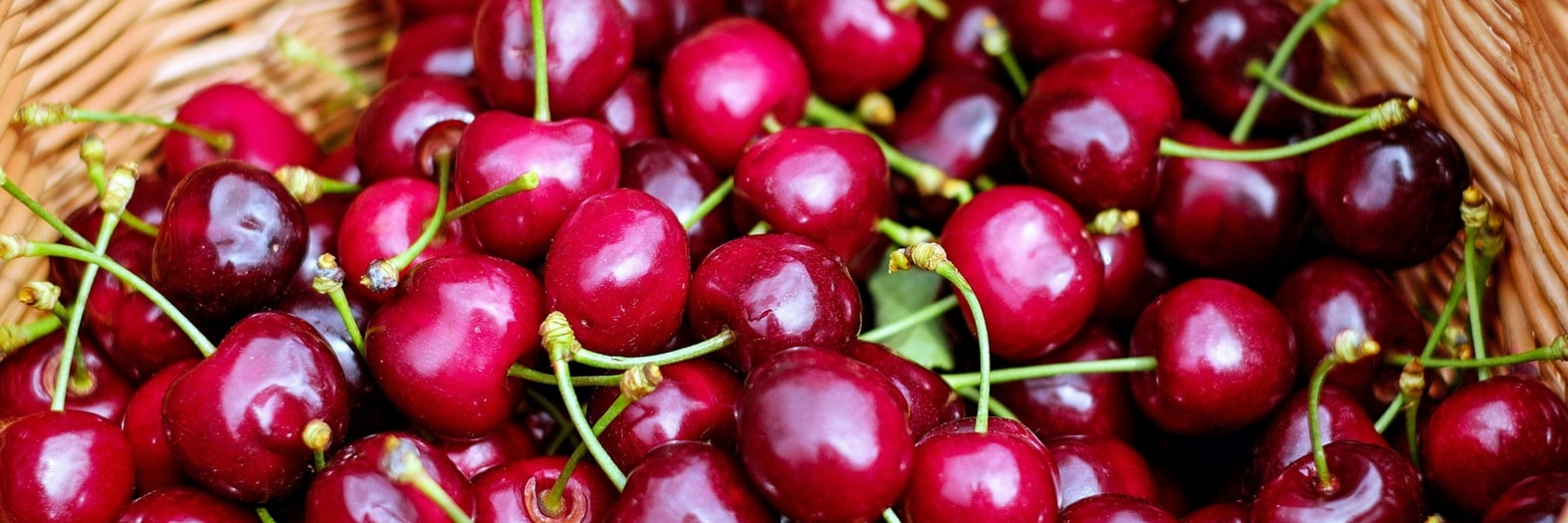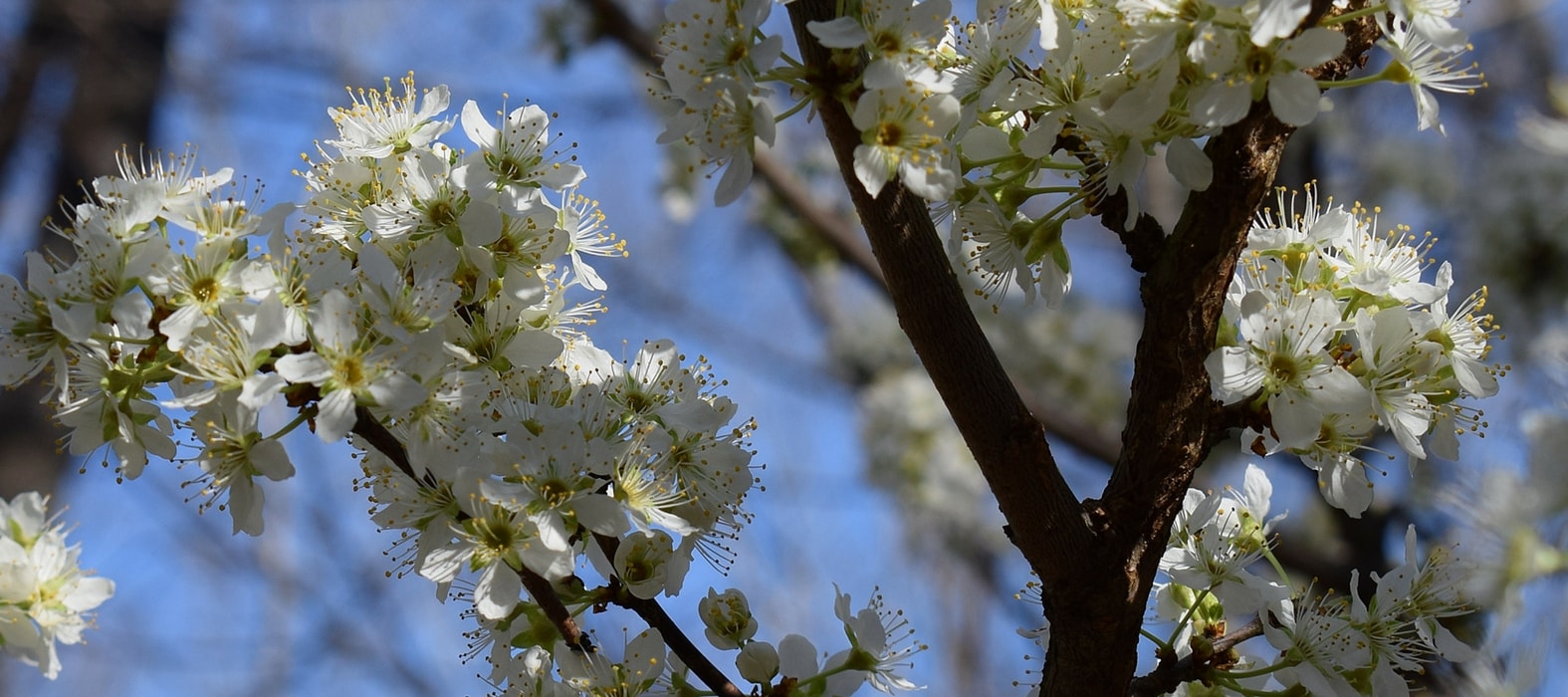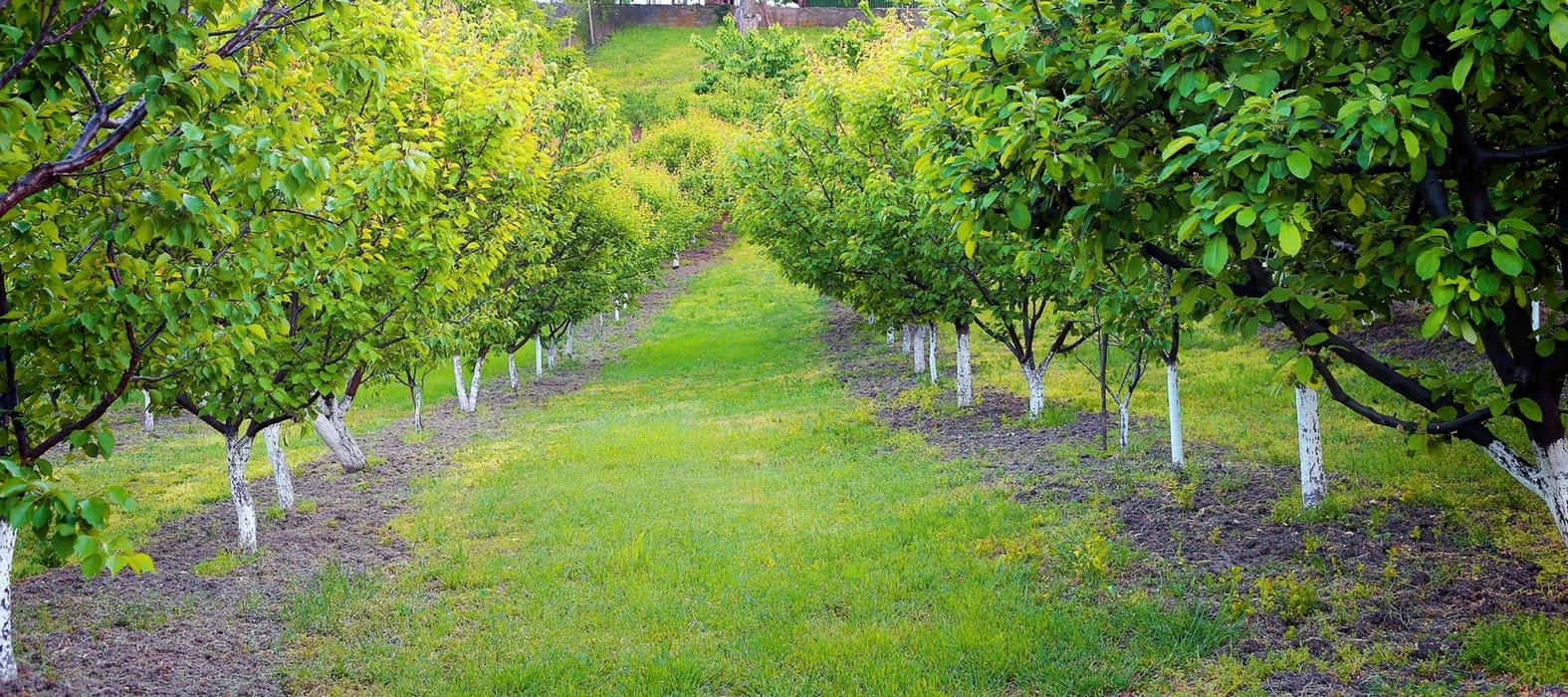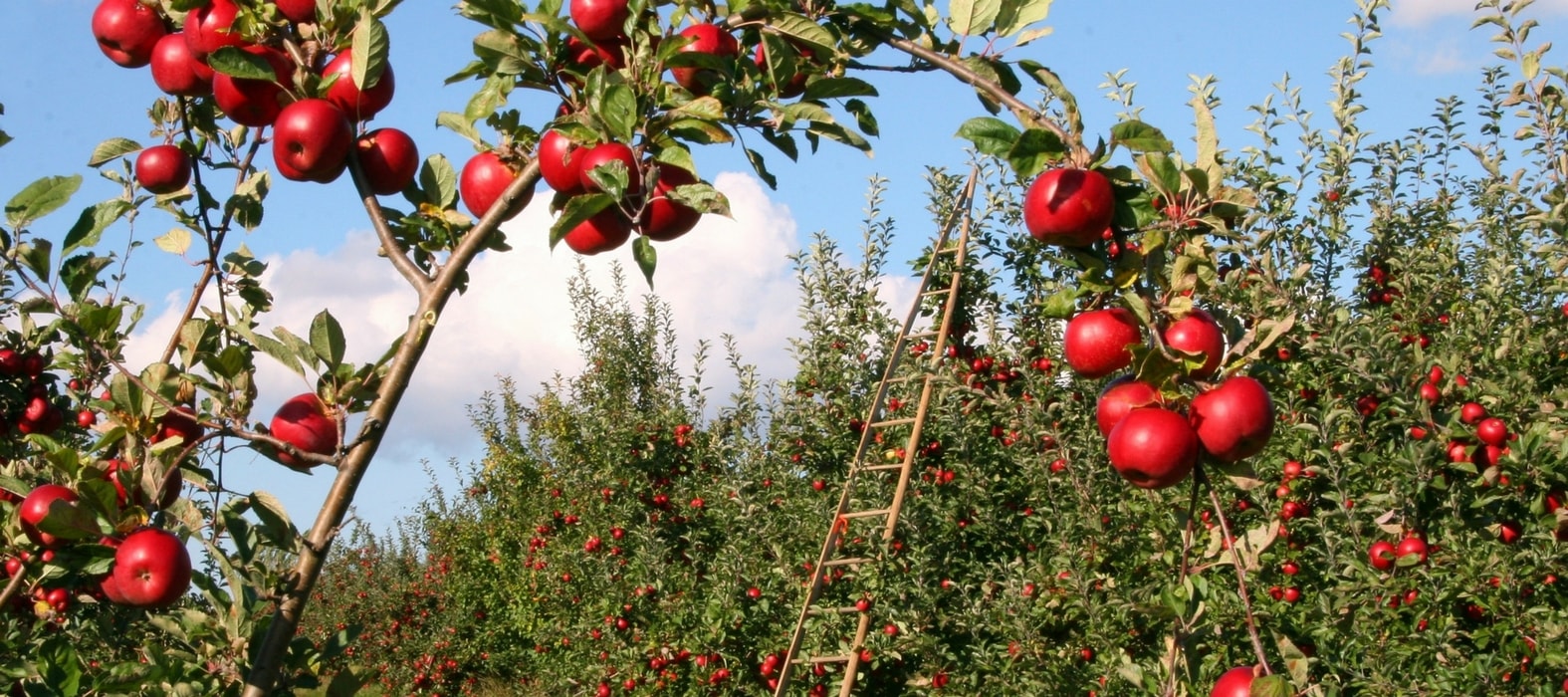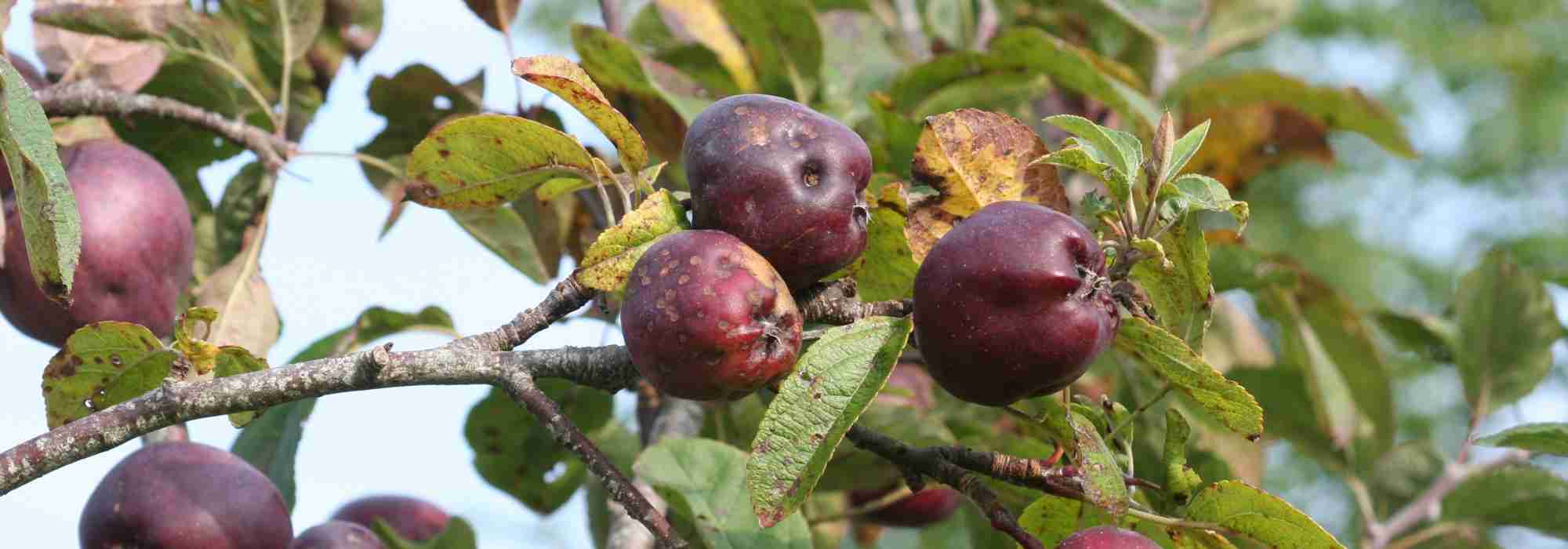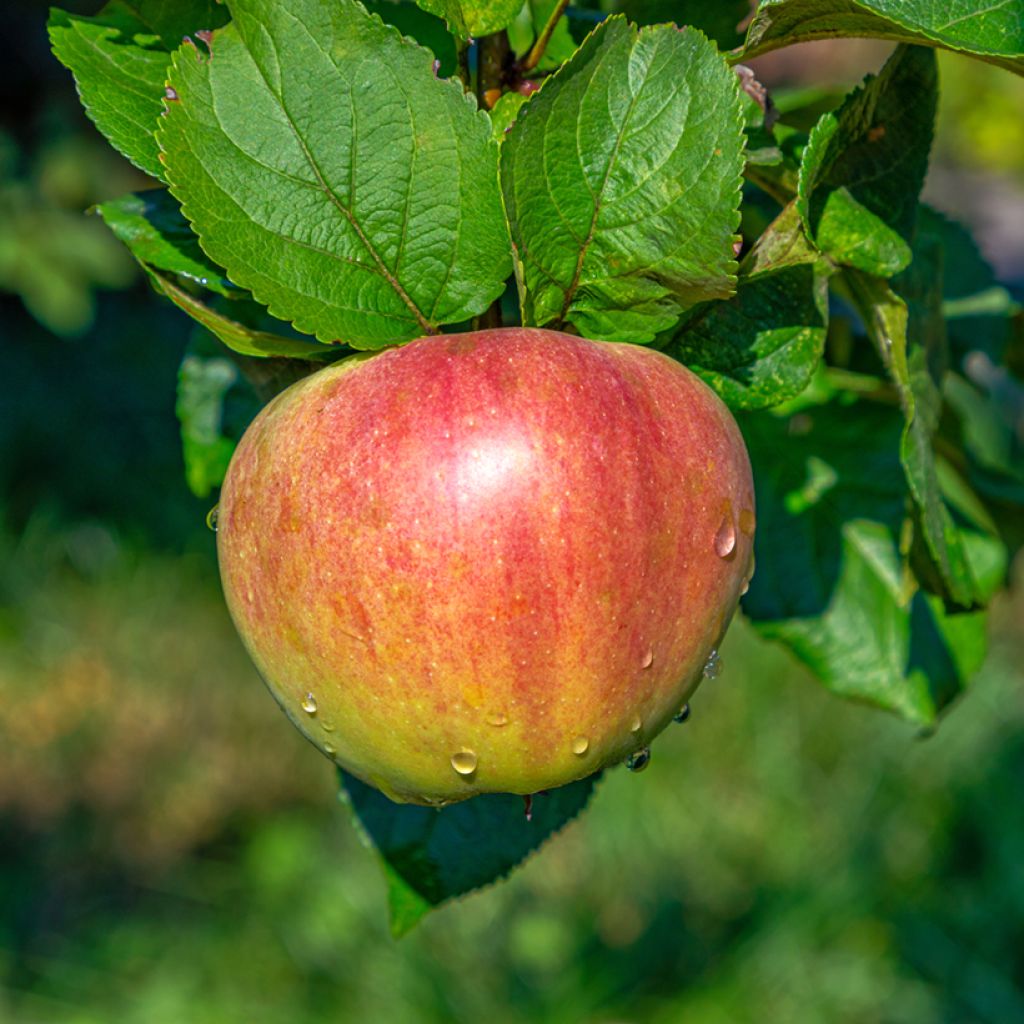

Apple Tree Grafsztynek Czerwony - Malus domestica
Apple Tree Grafsztynek Czerwony - Malus domestica
Malus domestica Grafsztynek Czerwony
Apple
Special offer!
Receive a €20 voucher for any order over €90 (excluding delivery costs, credit notes, and plastic-free options)!
1- Add your favorite plants to your cart.
2- Once you have reached €90, confirm your order (you can even choose the delivery date!).
3- As soon as your order is shipped, you will receive an email containing your voucher code, valid for 3 months (90 days).
Your voucher is unique and can only be used once, for any order with a minimum value of €20, excluding delivery costs.
Can be combined with other current offers, non-divisible and non-refundable.
Why not try an alternative variety in stock?
View all →This plant carries a 6 months recovery warranty
More information
We guarantee the quality of our plants for a full growing cycle, and will replace at our expense any plant that fails to recover under normal climatic and planting conditions.
Description
The 'Grafsztynek Czerwony' Apple Tree is an old Danish variety well-suited to cool oceanic climates. The tree develops a spherical crown which, in spring, is covered with very beautiful pale pink blossom. Its apples are quite large and adorned with a lovely yellow colour that turns strongly red at ripeness, in October. Their tangy flesh is very juicy, making them ideal for desserts and juices. These apples should be used quickly as they cannot be stored for very long. This variety requires pollination by another variety planted nearby.
The Apple Tree is a major member of the very large Rosaceae family. The genus Malus comprises around forty species, including the Common Apple Tree Malus domestica (synonyms, Malus communis or Malus pumila), as well as the non-fruiting species Ornamental Crabapples. The Romans already knew 29 different fruiting varieties, whereas today, there are approximately 20,000.
The Malus domestica 'Grafsztynek Czerwony' is a mutant of the original 'Grafsztynek' variety, first described in 1858. Originating from Denmark, and possibly also from Schleswig-Holstein (the northernmost German state, bordering with Denmark), this old variety is also known as 'Roter Gravensteiner'. The tree exhibits strong growth and forms a spherical to spreading crown typically reaching 4.5 m in height with a spread of 3.50 m. However, older specimens can approach 6 m in height with a highly ramified silhouette. Thriving in humid climates, it is found in Nordic coastal regions but not inland, as it is not sufficiently hardy for the harsh continental conditions of Eastern Europe. In April-May, it produces very beautiful blossom made of slightly larger single pale pink flowers than those of other varieties. Being self-sterile, it must be planted near a pollinator whose pollen will enable the blossom to be fertilised. Many varieties can serve this role including the 'Klaraapfel', 'Prince d'Oldenbourg', 'Koksa Pomarańczowa', 'Reneta Ananasowa', 'Reneta Baumann', 'Berlepsch', and 'Golden Delicious'. After fertilisation, the blossom gradually transforms into a fruit that ripens late in the season, in the heart of autumn. The initially yellow skin takes on an increasingly visible red blush eventually covering between a quarter and half of the fruit's surface. The apples should be picked at ripeness in October, as even though they are only edible by November, they should not be left on the tree. The large fruit size, especially in the first productive years, makes the apples prone to falling easily if the tree is shaken by autumn winds. The white-yellow flesh is delicious, aromatic, and tangy. This apple can be eaten raw or used for making desserts or juices. It cannot be stored for very long, only until around December, and does not travel well, which is why it is more suited to amateur home than commercial cultivation and consumption.
Appreciated for its taste qualities but only fairly average disease resistance and inability to be stored for long periods, this variety is mainly of interest to enthusiasts who already have an orchard, particularly with a pollinator tree. They could then enrich cross-pollination with a few Pear Trees which also include old varieties, or less common species such as the Mespilus germanica 'Macrocarpa' or German Medlar, a variety with larger fruits than the type species, which are also consumed late in the season after being exposed to frost. In not-too-harsh climates and sufficiently warm summers, you could add to this selection the fruits of the Persimmon, a tree with elegant glossy foliage that takes on superb autumn colours.
Plant habit
Fruit
Flowering
Foliage
Botanical data
Malus
domestica
Grafsztynek Czerwony
Rosaceae
Apple
Malus domestica Roter gravensteiner, Gravenstein rouge
Cultivar or hybrid
Other Apple trees
View all →Planting and care
Choose a sunny spot for your Grafsztynek Czerwony apple tree, ideally sheltered from strong winds which can easily cause ripe fruit to fall. The soil can be slightly alkaline or acidic, but not excessively so, and ideally not too dry, as this variety appreciates moisture (without waterlogging, the soil must still be well-drained). Dig a wide planting hole at least three times the size of the root ball. Add organic matter (compost, well-rotted manure...) and a base fertiliser such as ground horn at the same time. Do not bury the graft junction and stake if necessary. For apple trees planted in exposed and windy locations (if you have no choice), it may be beneficial to stake them by installing a guy-wire system: plant three stakes in a triangle 50 cm around the trunk, joining them with pieces of wood. Protect the bark with a piece of rubber, for example, and attach the stakes to the trunk with metal wires. Water generously, even in winter, even if it rains. Fruit trees are ideally planted between October and March, outside of frost periods. Container-grown plants can be planted all year round except during periods of extreme heat or frost.
In winter, you can add a small spadeful of wood ash rich in potash at the base of the tree and lightly work this into the soil surface to improve yield. Apple trees can be susceptible to various diseases and pests. To minimise risks, space trees sufficiently, plant mixed-species hedges, and set up nest boxes or insect shelters to attract beneficial wildlife. In short: prioritise diversity. The main diseases affecting apple trees are scab (brown spots on leaves), brown rot (withering of flowers and fruit rot on the tree), and powdery mildew (white felting on leaves). For these three cases, preventive action is preferable as this apple tree is moderately susceptible to scab and powdery mildew. Spray a horsetail decoction and, as a last resort during severe outbreaks, apply a Bordeaux mixture treatment. As for pests, the codling moth (or fruit worm), a small caterpillar from a moth’s eggs, worms itself within the fruit. To combat this, it is best to act preventively by encouraging blue tits and bats with nest boxes. In case of aphid infestations, spray a solution of tar soap.
Harvest the apples in October to eat in November. They can be stored under good conditions until December at the latest.
Planting period
Intended location
Care
Planting & care advice
This item has not been reviewed yet - be the first to leave a review about it.
Haven't found what you were looking for?
Hardiness is the lowest winter temperature a plant can endure without suffering serious damage or even dying. However, hardiness is affected by location (a sheltered area, such as a patio), protection (winter cover) and soil type (hardiness is improved by well-drained soil).

Photo Sharing Terms & Conditions
In order to encourage gardeners to interact and share their experiences, Promesse de fleurs offers various media enabling content to be uploaded onto its Site - in particular via the ‘Photo sharing’ module.
The User agrees to refrain from:
- Posting any content that is illegal, prejudicial, insulting, racist, inciteful to hatred, revisionist, contrary to public decency, that infringes on privacy or on the privacy rights of third parties, in particular the publicity rights of persons and goods, intellectual property rights, or the right to privacy.
- Submitting content on behalf of a third party;
- Impersonate the identity of a third party and/or publish any personal information about a third party;
In general, the User undertakes to refrain from any unethical behaviour.
All Content (in particular text, comments, files, images, photos, videos, creative works, etc.), which may be subject to property or intellectual property rights, image or other private rights, shall remain the property of the User, subject to the limited rights granted by the terms of the licence granted by Promesse de fleurs as stated below. Users are at liberty to publish or not to publish such Content on the Site, notably via the ‘Photo Sharing’ facility, and accept that this Content shall be made public and freely accessible, notably on the Internet.
Users further acknowledge, undertake to have ,and guarantee that they hold all necessary rights and permissions to publish such material on the Site, in particular with regard to the legislation in force pertaining to any privacy, property, intellectual property, image, or contractual rights, or rights of any other nature. By publishing such Content on the Site, Users acknowledge accepting full liability as publishers of the Content within the meaning of the law, and grant Promesse de fleurs, free of charge, an inclusive, worldwide licence for the said Content for the entire duration of its publication, including all reproduction, representation, up/downloading, displaying, performing, transmission, and storage rights.
Users also grant permission for their name to be linked to the Content and accept that this link may not always be made available.
By engaging in posting material, Users consent to their Content becoming automatically accessible on the Internet, in particular on other sites and/or blogs and/or web pages of the Promesse de fleurs site, including in particular social pages and the Promesse de fleurs catalogue.
Users may secure the removal of entrusted content free of charge by issuing a simple request via our contact form.
The flowering period indicated on our website applies to countries and regions located in USDA zone 8 (France, the United Kingdom, Ireland, the Netherlands, etc.)
It will vary according to where you live:
- In zones 9 to 10 (Italy, Spain, Greece, etc.), flowering will occur about 2 to 4 weeks earlier.
- In zones 6 to 7 (Germany, Poland, Slovenia, and lower mountainous regions), flowering will be delayed by 2 to 3 weeks.
- In zone 5 (Central Europe, Scandinavia), blooming will be delayed by 3 to 5 weeks.
In temperate climates, pruning of spring-flowering shrubs (forsythia, spireas, etc.) should be done just after flowering.
Pruning of summer-flowering shrubs (Indian Lilac, Perovskia, etc.) can be done in winter or spring.
In cold regions as well as with frost-sensitive plants, avoid pruning too early when severe frosts may still occur.
The planting period indicated on our website applies to countries and regions located in USDA zone 8 (France, United Kingdom, Ireland, Netherlands).
It will vary according to where you live:
- In Mediterranean zones (Marseille, Madrid, Milan, etc.), autumn and winter are the best planting periods.
- In continental zones (Strasbourg, Munich, Vienna, etc.), delay planting by 2 to 3 weeks in spring and bring it forward by 2 to 4 weeks in autumn.
- In mountainous regions (the Alps, Pyrenees, Carpathians, etc.), it is best to plant in late spring (May-June) or late summer (August-September).
The harvesting period indicated on our website applies to countries and regions in USDA zone 8 (France, England, Ireland, the Netherlands).
In colder areas (Scandinavia, Poland, Austria...) fruit and vegetable harvests are likely to be delayed by 3-4 weeks.
In warmer areas (Italy, Spain, Greece, etc.), harvesting will probably take place earlier, depending on weather conditions.
The sowing periods indicated on our website apply to countries and regions within USDA Zone 8 (France, UK, Ireland, Netherlands).
In colder areas (Scandinavia, Poland, Austria...), delay any outdoor sowing by 3-4 weeks, or sow under glass.
In warmer climes (Italy, Spain, Greece, etc.), bring outdoor sowing forward by a few weeks.






























